Is your affordable red light therapy wand just a gimmick? You see them everywhere, from $60 wands to portable panels, all promising professional results. The good news is many use the same clinically-proven light wavelengths as thousand-dollar machines. The secret is knowing their real purpose.
These devices trade massive power for targeted, convenient treatments you can do at home. We’ll explore five groundbreaking wellness gadgets, including infrared sauna blankets, muscle-relaxing facial tools, and advanced pain relief bands. This is the truth about what at-home wellness tech can deliver.
Is Your $60 RLT Wand Wasting Your Time? The Truth About Power, Flicker, and the ‘Biphasic Dose’
RLT: Entry-Level vs. Pro-Grade
A comparison of key device trade-offs
Entry-Level Devices
- Price Range: Typically $50 – $500
- Primary Use: Targeted Treatment (e.g., face, specific joints, muscles)
- Power (Irradiance): Lower (May require longer treatment times)
- Key Benefit: Affordable, portable, and great for specific areas.
Professional-Grade Panels
- Price Range: Often $1,000 – $10,000+
- Primary Use: Full-Body Coverage (e.g., systemic health, athletic recovery)
- Power (Irradiance): High (Delivers a powerful dose in less time)
- Key Benefit: Maximum coverage and power for efficient, full-body sessions.
The Shared Core Technology
Both types often use the same clinically-studied wavelengths, most commonly 660nm (Red Light) and 850nm (Near-Infrared).

The term “$60 device” signifies a growing market of small, portable at-home red light therapy (RLT) wands and panels from accessible brand like Hooga.
This products are not one-to-one replacements for large, professional-grade panels. Which cost thousands of dollars due to their size, high power output (irradiance). And medical-grade construction. Instead, these affordable alternatives, often priced between $50 and $500, offer an accessible entry point to RLT.
While the price is drastically different, these budget-friendly devices frequently use the same clinically-proven wavelengths as their expensive counterparts—most commonly 660nm (red light) and 850nm (near-infrared).
The primary trade-offs are:
- Power & Time: Cheaper devices have lower irradiance, meaning treatment sessions may need to be longer to deliver a comparable energy dose.
- Application: They are designed for portability and targeted treatments (like facial skin, specific joints, or muscles) rather than full-body coverage.
This low price point has made red light therapy accessible to consumers who want to experiment with the technology for specific needs without making a significant financial investment. The idea that they are “replacing” professional panels simply highlights a market shift where consumers can now achieve similar core benefits for targeted issues at a fraction of the cost.
Hooga Health LED Hat
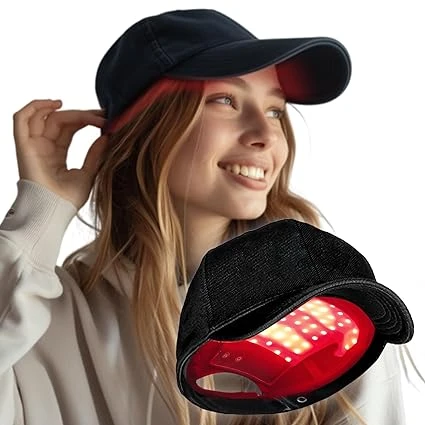
The Hooga Health LED Hat stands out in the market for red light therapy devices due to its incredibly discreet and practical design. By embedding the therapeutic technology inside the lining of a standard baseball cap.
It removes the social or aesthetic barrier that often comes with using medical-looking devices. This design makes it highly suitable for individuals seeking a consistent hair regrowth solution without disrupting their daily life.
Users can wear it while performing routine tasks like working from home. Reading, or watching television, making it far more likely that they will adhere to the recommended treatment schedule.
The primary function of this hat is to combat hair thinning and promote regrowth through photobiomodulation. The red lights inside the cap emit specific wavelengths of light that are absorbed by the cells in the scalp.
This light energy is believed to stimulate mitochondria (the “powerhouses” of cells) within the hair follicles. This stimulation can increase blood flow to the scalp, delivering more oxygen and nutrients to the follicles.
It’s also thought to help shift hair follicles from a resting (telogen) phase into an active growth (anagen) phase. Resulting in a potential decrease in hair shedding and an increase in hair density and thickness over time.
Using the device is designed to be effortless. Unlike topical serums that can be messy or handheld devices that cause arm fatigue, this hat is a “set it and forget it” treatment. The user simply places the cap on their head and turns it on, usually for a pre-set session time (e.g., 15-30 minutes).
Because the device is hands-free and portable (often battery-powered), it allows for complete freedom of movement during the treatment. This convenience is a key selling point, as consistency is the most critical factor for seeing results with any light-based hair therapy.
Laduora
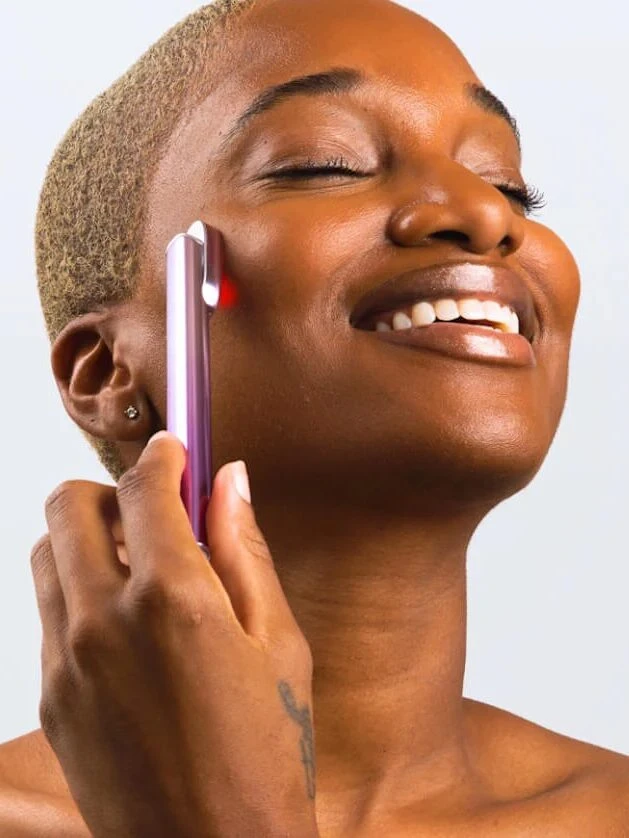
The Laduora DUO is a specialized device that focuses on “scalp therapy,” treating the scalp as the foundational ecosystem for healthy hair. It moves beyond just treating the hair strands and instead targets the skin and follicles where hair originates.
Its high-tech brush design combines three distinct technologies—red light, gentle warmth, and sonic vibrations—into a single, handheld tool. This multi-pronged approach aims to create the optimal environment for hair growth by addressing multiple issues at once, from circulation to product buildup.
Each of the device’s functions plays a specific role. The red light component works similarly to other hair growth devices, stimulating cellular activity and blood flow at the follicle level. The gentle warmth (thermal therapy) complements this by helping to dilate blood vessels, further enhancing circulation.
This warmth can also make the experience more relaxing and may help improve the absorption of any topical scalp serums or treatments used in conjunction with the device.
The sonic vibrations provide a gentle massage that can help dislodge dead skin cells, excess oil, and product residue that might be clogging follicles, while simultaneously stimulating the scalp.
Using the Laduora DUO is an active process, more akin to a wellness ritual than a passive treatment. The user would turn the device on and slowly glide the “brush” over their entire scalp, moving section by section.
This massage-like motion helps to ensure all areas receive the combined benefits of the light, heat, and vibration. It is typically used for a few minutes several times a week, often on dry hair or before a shower. The goal is to leave the scalp feeling refreshed, clean, and stimulated, which in turn helps hair feel stronger and look healthier.
Therabody (Multi-Tool)
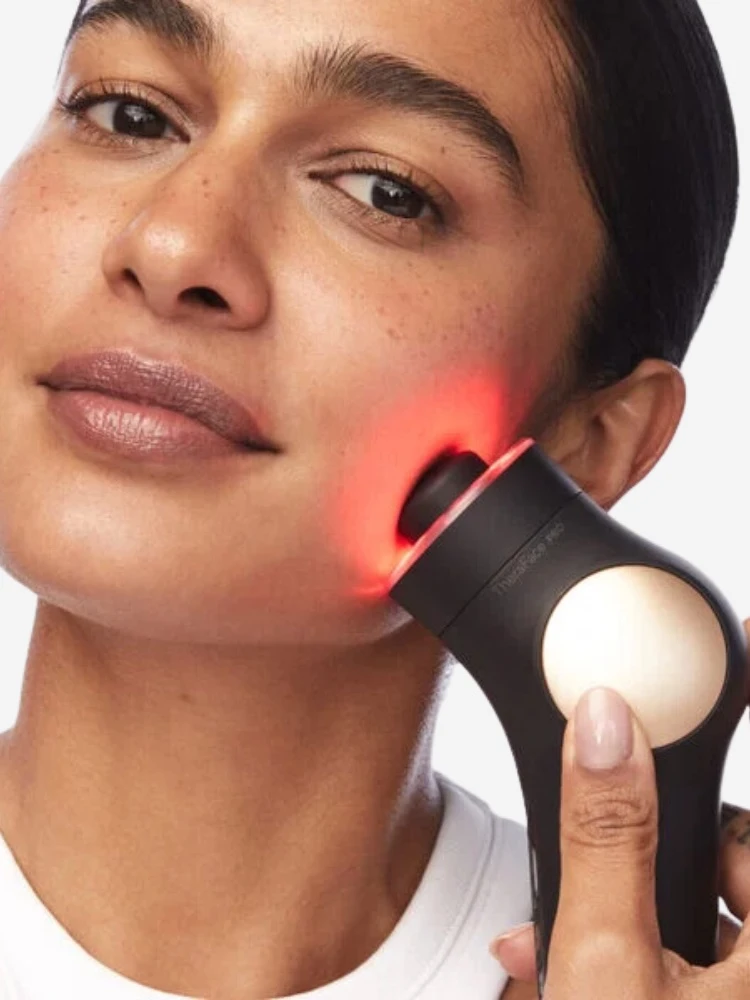
This Therabody device is a comprehensive facial tool that uniquely merges skincare with muscle therapy. Its “all-in-one” nature comes from its set of interchangeable attachments, allowing it to perform several different functions. What truly sets it apart is the integration of Therabody’s signature percussive therapy (tiny, rapid massages) with red light therapy.
This combination allows it to address not just the surface of the skin (like wrinkles and puffiness). But also the underlying facial muscles, which are often sources of tension and can contribute to expression lines.
The benefits are twofold. First, the percussive therapy attachments are designed to treat the often-overlooked muscles of the face, jaw, and neck. By gently massaging these muscles, the device can help release tension, which is a common cause of tension headaches and jaw pain (like TMJ).
This muscle relaxation can also help soften expression lines. Second, the red light therapy attachment works on a cellular level to promote collagen and elastin production.
Which helps to firm the skin and reduce the appearance of fine lines and wrinkles over time. Other attachments, like cleansing heads or microcurrent rings, may also be included to help with lymphatic drainage. Which is key to reducing puffiness.
The user experience is highly customizable based on the desired outcome. A user might start with a cleansing attachment for a deep clean. They could then switch to a percussive head to work on a tense jaw or temples.
They might use the red light attachment, gliding it slowly over the entire face and neck to treat the skin. This modularity allows a person to create a complete, professional-grade facial routine with a single handheld device. Addressing everything from skin health to muscle-related discomfort.
HigherDOSE Infrared Sauna Blanket
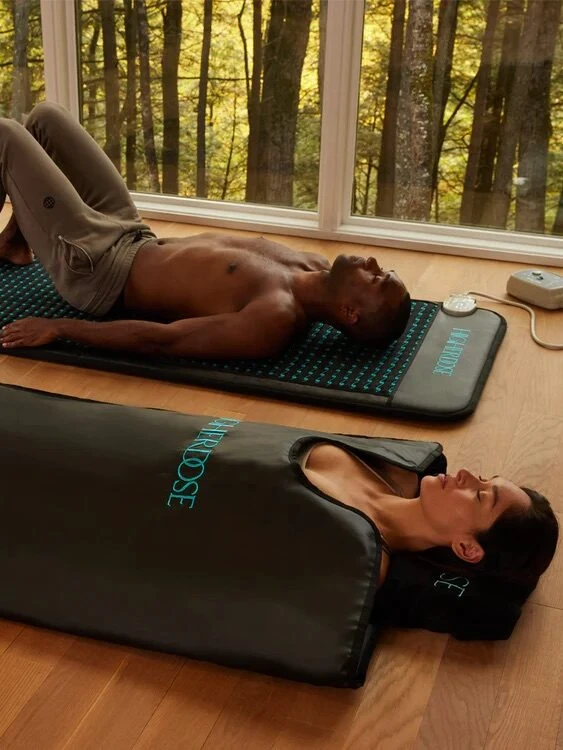
The HigherDOSE Infrared Sauna Blanket is a full-body wellness tool that brings. The benefits of a sauna into the home without the need for a large, permanent installation. Unlike traditional saunas that heat the air, this blanket uses far-infrared heat.
This type of heat penetrates the body more deeply, allowing the user to experience a more intense. Detoxifying sweat at a lower, more comfortable ambient temperature. It’s essentially a portable, personal sauna that you can wrap yourself in.
The main benefits stem from this deep, penetrating heat. The primary benefit is a full-body detoxification through profuse sweating, which can help the body expel impurities. This intense heat also causes vasodilation (widening of the blood vessels), which significantly boosts circulation and can provide a “passive” cardiovascular workout.
This improved blood flow is excellent for muscle recovery after a workout, as it helps deliver oxygen-rich blood to sore tissues and flush out metabolic waste.
Using the blanket is a relaxing ritual. The user lays it out on a heat-safe surface (like a bed, sofa, or yoga mat) and allows it to preheat. It’s recommended to wear comfortable, loose-fitting cotton clothing and socks to absorb sweat.
The user then gets inside the blanket, zips it up, and relaxes for a 30- to 45-minute session. Following the session, the article’s recommendation to take a cold shower is a form of contrast therapy.
This rapid shift from hot to cold provides an invigorating jolt to the circulatory system, further enhances the mood-boosting effects, and helps to close the pores.
DNA Vibe Jazz Band
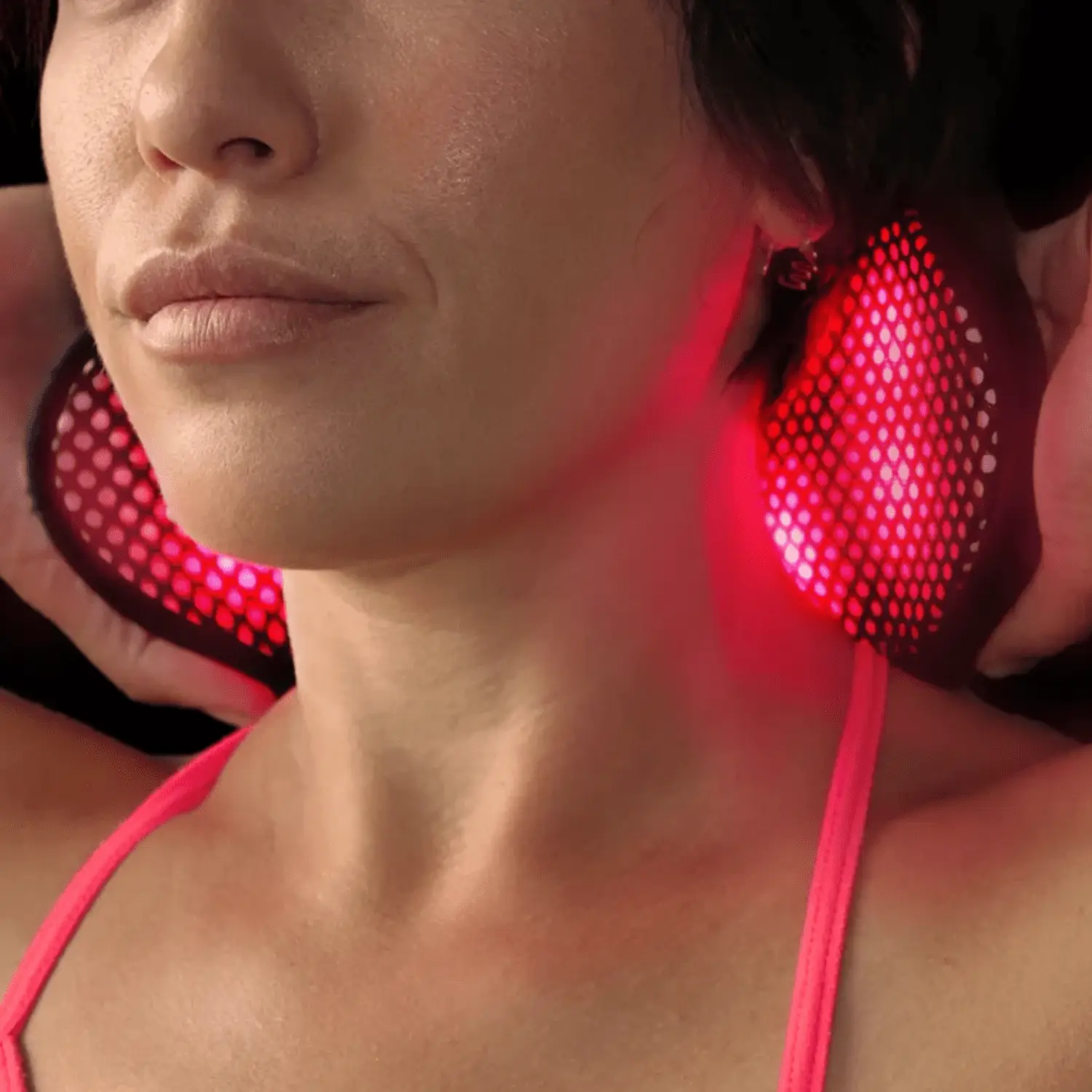
The DNA Vibe Jazz Band is a highly targeted and flexible device designed specifically for pain relief and recovery. Its key differentiator is its form factor—it’s a soft, flexible band that can be wrapped snugly around various body parts.
This makes it ideal for treating complex joints like knees, elbows, and ankles, or for broader areas like the lower back, which are difficult to treat with flat, rigid light panels. It’s built for active people who need a solution they can wear while moving, rather than one that requires them to sit still.
This device’s power comes from its multi-modal approach, which combines four different therapies into one session. It uses both red light (for surface-level tissue) and near-infrared light (which penetrates much deeper to reach muscles, joints, and ligaments).
Micro-vibrations provide a gentle massage that increases local blood flow and, perhaps most importantly, can help to “gate” or block pain signals from reaching the brain, offering more immediate relief.
The “how to use” aspect is focused on convenience and versatility. The user wraps the flexible band around the area of pain or stiffness and secures it. Because it’s wearable and often battery-powered, the user is not tethered to a wall.
They can wear it while working at a desk, commuting, or simply relaxing at home. This portability is crucial for managing chronic pain, as it allows for consistent, frequent treatments without interrupting the user’s daily life, leading to better compliance and, ultimately, better results for managing stiffness, aches, and injuries.


